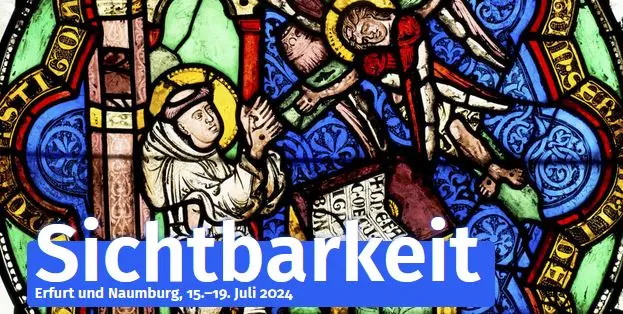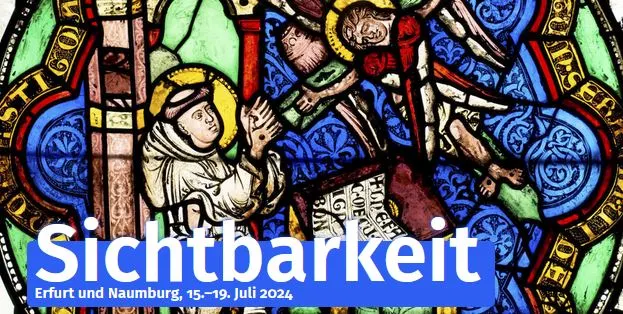How did people see stained glass in the Middle Ages? Who had access to see them? How have perceptions changed historically? How can digital media be used to make the works of art, which are often installed at great heights and still fascinate many people today, accessible to a broad public? These and many other questions will be discussed under the general theme of "Visibility" at an international conference organised by the German Corpus Vitrearum Medii Aevi (CVMA) in Erfurt and Naumburg in July. The Corpus Vitrearum, which currently has 14 active member countries, was founded as an international project in 1952 in the wake of the destruction caused by the world wars and has since been dedicated to researching and preserving stained glass as a central cultural heritage of the European Middle Ages.
The conference will be opened by Professor Christoph Markschies, President of the Union of the German Academies of Sciences and Humanities and the Berlin-Brandenburg Academy of Sciences and Humanities: "As a layperson, you are overwhelmed by the colourful symphony of medieval stained glass windows found in the churches that the CVMA works on. After a while, the overwhelming effect is compounded by the curiosity to know what is depicted on the colourful panes and why it is there. Of course, very few people who ask this question will immediately have the magnificent volumes of the Corpus to hand, but the famous small brochures, larger church guides and oral explanations on site are only successful if at least those responsible for them have read the volumes. And some people read the marvellous volumes of the CVMA afterwards, even if they don't want to write a small art guide about the building with the windows. I'm one of them."
In addition to art-historical aspects, the general theme of the conference also covers key technological and conservation/restoration issues. These concern the investigation of innovations in material technology as well as the question of how fragmentary stained glass can be restored in such a way that it retains its historical appearance and at the same time its original quality can be perceived again. The – very topical – political dimensions of the topic of "visibility" of cultural heritage will be shown in lectures on stained glass in the Ukraine and on the handling of colonial-era glazing in Shanghai.
The central conference venue - in cooperation with the University of Erfurt and St Mary's Cathedral – is the Erfurt Cathedral grounds. A conference and excursion day will also take place in Naumburg. Both cities have a particularly outstanding heritage of medieval stained glass and are exemplary for the exemplary restoration efforts of recent years. The recently completed restoration of the stained glass of Naumburg Cathedral, in which the Potsdam office of the CVMA was involved, is particularly noteworthy.


